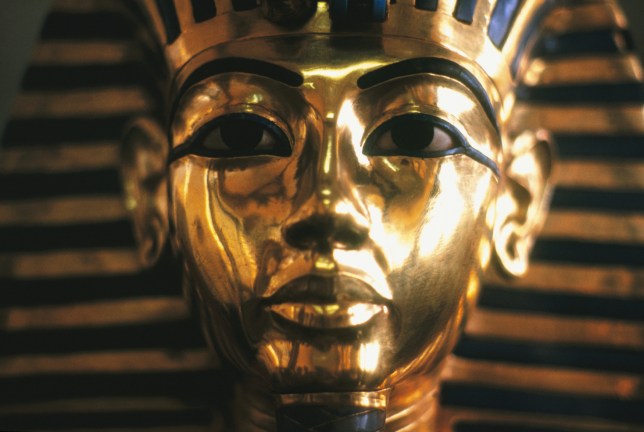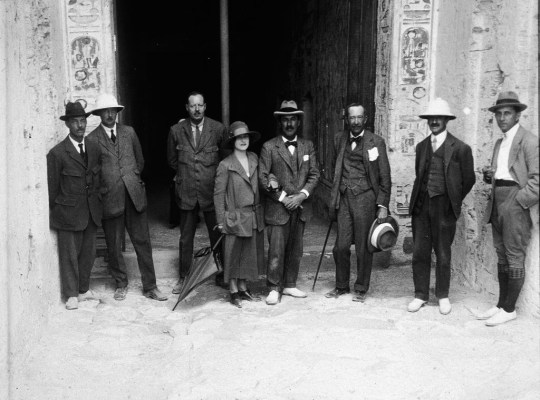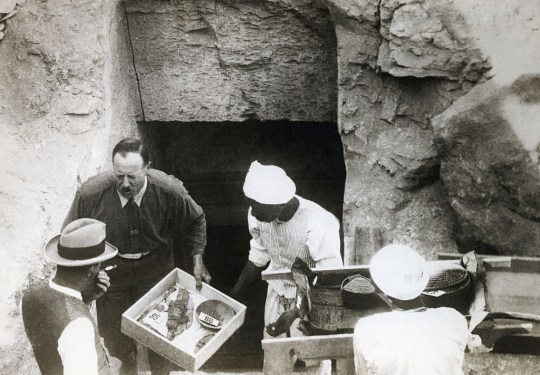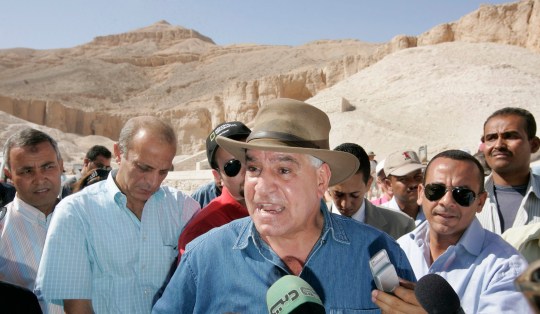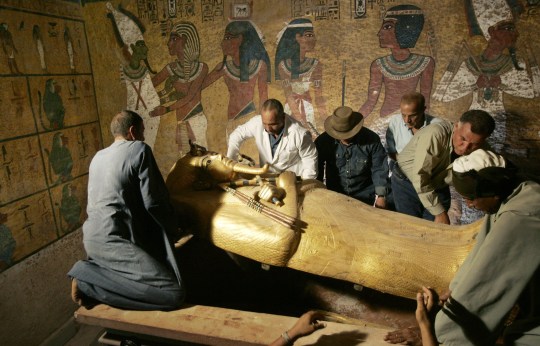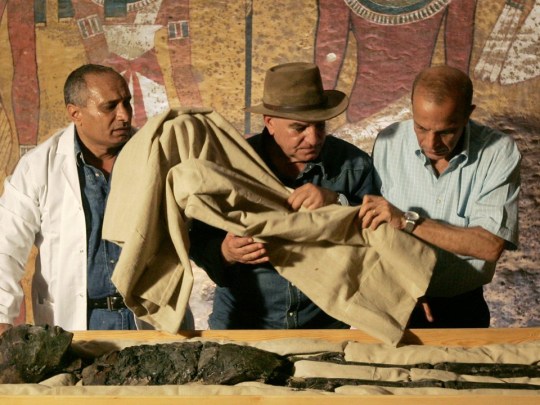A century ago, on November 4, 1922, British aristocrat Lord Carnarvon and a team of archaeologists cracked open the tomb of Tutankhamun for the first time in thousands of years.
However, a scientist now claims to have solved the mysteries of the infamous ‘Pharaoh’s Curse’ more than 100 years later, and it’s far less supernatural than it may appear.
Toxic levels of radiation emanating from uranium and poisonous waste are now believed to have lingered inside the tomb since it was sealed over 3,000 years ago, Ross Fellowes wrote in the Journal of Scientific Exploration (JSE).
Exposure to these substances could well have contributed to the deaths of those who entered the tomb,with the ‘curse’ said to affect those who disturb the remains of any Ancient Egyptian person, leading to bad luck, illness and even death.
In the months and years following their sensational discovery, several of those who entered the dark and dusty chamber died under strange and mysterious circumstances – adding the most famous chapter to the Curse of the Pharaohs.
Lord Carnavon died just a few months after opening the tomb after a mosquito bite on his face led to blood poisoning. Two of his half-brothers died shortly after visiting the tomb in 1923.
Prince Ali Kamel Fahmy Bey of Egypt was shot dead by his wife in 1923. George Jay Gould I, son of the famous financier Jay Gould, visited the tomb before dying of a fever.
Sir Lee Stack, governor-general of the Sudan, was assassinated in 1924.
Lead archaeologist Howard Carter’s secretary Richard Bethell was supposedly smothered in his bed in 1929.
Carter himself died in 1939 likely of a heart attack after a long battle with Hodgkin’s lymphoma, which impacts the immune system of the body.
And more recently, the head of the Egyptian Antiquities Service was killed in a road accident in the 1970s – shortly after agreeing to a travelling exhibition of the treasures found within the tomb.
Others involved in the excavation have died of asphyxia, stroke, diabetes, heart failure, pneumonia, poisoning, malaria and X-ray exposure – and all passed in their 50s.
British Egyptologist Arthur Weigall attended the opening of the tomb, and he was accused of inciting the ‘myth’ of a curse – he died of cancer at 54.
Inscriptions found inside other burials throughout Egypt suggested the ancient people may even have known about the toxins in the tomb, with some eerie text translating.
‘The nature of the curse was explicitly inscribed on some tombs, with one translated presciently as, ‘they that break this tomb shall meet death by a disease that no doctor can diagnose,’ Fellowes wrote.
The JSE study also explained that high radiation levels were documented in other Old Kingdom tombs – two in Giza and underground tombs at Saqqara.
The same conclusion was also found throughout the famous Osiris tomb at Giza.
Fellowes noted that ‘intense radioactivity was associated with two stone coffers, especially from the interiors.’
Last year, a fellow former Antiquities minister also revealed how he dodged the infamous curse – and believes it has a far less paranormal origin.
Dr Zahi Hawass, widely regarded as the world’s leading Egyptologist, said the key to keeping safe is staying away from ancient bacteria.
‘When you have a mummy inside a tomb, this mummy has germs that you cannot see,’ he told the US Sun.
‘Archaeologists in the past, they were in a hurry and they entered inside the tombs and they were hit by germs and they died.’
To avoid the same fate, Dr Hawass takes his time.
‘Only two weeks ago I found a sealed sarcophagus, 25 tonnes in weight about 60 feet under the ground.
‘The lid of the sarcophagus was about six tonnes. Two workmen began to open it for me, to raise the lid, then I can put my head and see what’s inside.
‘When they opened it I left it open for half an hour [so] the bad air would go out and the fresh air would go in and I put my head [in] and nothing. That’s the Curse of the Pharaohs.’
Of course, 3,000-year-old bacteria wouldn’t make anyone more susceptible to assassination or murder attempts, but Dr Hawass is still keen to put the myth to bed.
‘The Curse of the Pharaohs became more famous when the tomb of Tutankhamun was found and Lord Carnarvon gave exclusive rights to the Times of London,’ he said.
‘Then the rest of the reporters cannot write anything. But when Lord Carnarvon died five months after the discovery, they created many stories about the curse that were not true.’
MORE : Painting worth £85,000,000 seized after family ‘kept it hidden from traffickers’
MORE : Why have so many people deformed their skulls over the years?
MORE : A ‘weird’ Viking mystery has finally been solved
Get your need-to-know
latest news, feel-good stories, analysis and more
This site is protected by reCAPTCHA and the Google Privacy Policy and Terms of Service apply.

